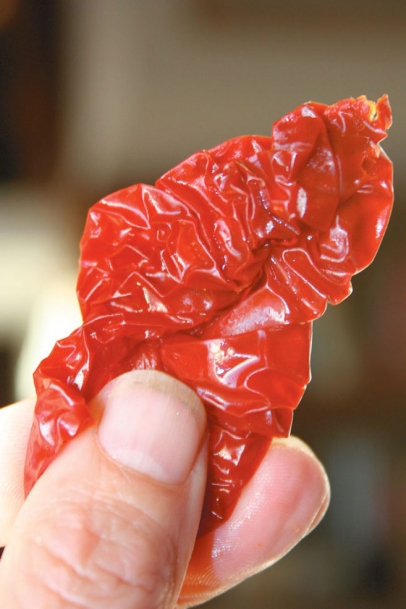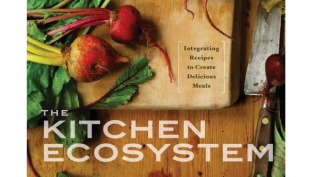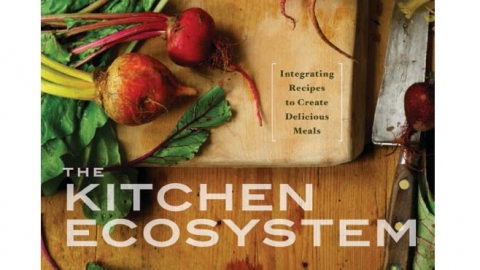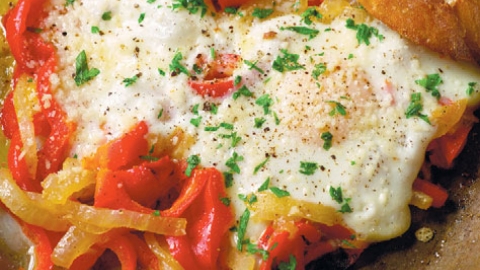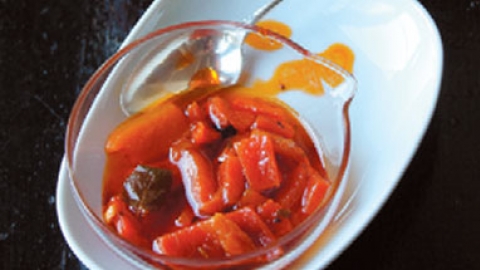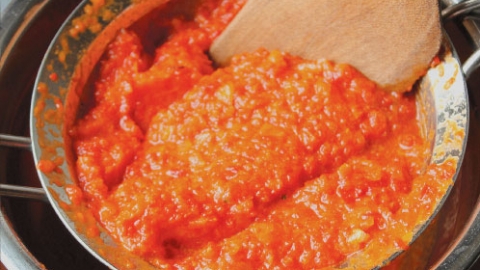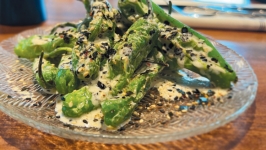The Sweet Peppers of Summer
If you’ve ever planted peppers then you know what overwhelming bounty is. It always amazes me how many peppers a scrawny little pepper plant can produce. And the variety! There’s a flavor for everyone, from hot to spicy to sweet. I love them all, but my heart belongs to the Bell, that stir-fry perennial.
Green Bell peppers are unripe red or orange Bell peppers, and they are great raw, and cooked with fish and shellfish. Red (or orange) sweet peppers are also good raw, and perfect for broiling, marinating, and stewing. Look for wrinkle-free peppers with shiny, taut skin. One medium-sized Bell pepper yields about ½ cup chopped pepper, and there are four or five medium peppers to a pound.
They grow in 11 out of 13 hardiness zones, and from what I can tell, that means everywhere in the continental U.S. Bells are resistant to most pests, which may be why you see a gazillion of them in farmers’ markets in the summer, usually at pretty great prices. Yeah, it’s hard to just buy one.
That’s what got me started marinating and canning them. I put up a pint or two a week throughout the season, usually while I am hanging around the kitchen cooking dinner anyway. And I eat them like crazy in fresh dishes. I broil and peel them and make salads with boiled shrimp, or warm potatoes, or canned tuna fish. I’ll saute a mass of sliced ripe Bells with onions and sometimes garlic and from that make multiple dishes: pan-cooked veal chops with peppers, onions and white wine; pureed peppers and onions thinned with a bit of chicken stock and poured over penne, then garnished with Parmesan cheese and chopped parsley; a summer fish stew composed of skate, squid and mussels, peppers and onions, and seasoned with a dash of vinegar.
But I think my favorite summer pepper dish is sauteed peppers and onions with eggs poached on top. This was the dish that my father dreamt of when he was a frightened infantryman in Austria in 1944, the dish I dreamt of when I was living in a windowless room in the back of a bar in New Orleans in the early ’80s, the dish my daughter dreamt of as she trudged through the Canadian snow to get to class last year. No dish is more personal to me, and I think that’s because it is simple and true and embodies two very important things: summer and home.
How to broil peppers
Some recipes call for the peppers to be charred and the skin to be removed from the pepper. You can do this under the broiler or on top of a gas burner, directly on the heat. Under the broiler is more convenient and faster, but the peppers easily overcook. Cooking on the burner, where you place a couple of peppers on each burner and turn them with tongs until they are blistered all over, is more work, but produces a more controlled result. (If you use this technique the kitchen will fill with a tasty burning smell. I always get calls from my neighbors when I use this method.) I use the broiler with the door open so I can watch them more closely. Heat the broiler to hot. Place the peppers on a baking sheet. Place under the broiler. Turn the peppers as they blister. It takes about 5 minutes for a tray of peppers to roast. Some people like to put roasted peppers in bags to loosen the skin for easy removal. I don't do it when using the broiler to blister peppers, because doing so steam-cooks the peppers. As soon as you can handle the peppers, remove the skin. Usually, the skin will slip off in a few big peels. If some skin sticks, it's OK. Remove the seedpod, and rinse out the seeds.
Preserving Peppers
Peppers are a low-acid food and generally have to be pressure canned to be shelf stable. You have to blanch or blister them first, then pack in jars and cover with boiled water, leaving 1-inch headroom. Pints process for 35 minutes at 10/11 psi at sea level, depending on the type of pressure canner you have. Be sure to make altitude adjustments when canning. The USDA has developed a recipe for marinated peppers, a kind of mildly pickled peppers that can be safely water bath canned. And of course, you can pickle peppers, from sweet or hot cultivars, and water bath can the jars. Peppers can be frozen raw, halved and seeded and packed in freezer bags. Sweet peppers dry really well, much like a dried tomato, and can be used in many of the same recipes. Remove the seeds and cut them in quarters. Blanch for 4 minutes and drain well. Dry in a food dryer at 135°F. for 8 to 12 hours until the peppers are tough. Store in a jar in the pantry or fridge.


